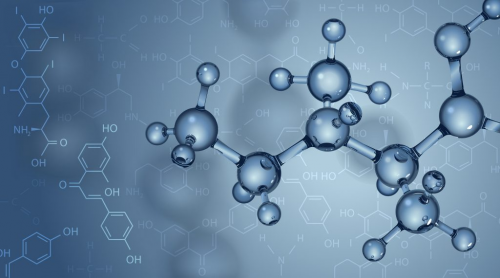2nd Year

Organic Chemistry I.
Lecture:
Curse code: GYTKAM121
Type of subject: compulsory
Credit value: 5
Number of contact hours (per week): 4
Form of mid-year report: written MTO
Assessment/examination form: colloquium
Site in curriculum: Semester 3
Subject prerequisite(s): General Chemistry lecture (GYTKAM-051); General Chemistry Practice (GYTKAM-052), Organic Chemistry practice (GYTKAM-122)
Head of subject: Dr. István Szatmári
Instructors involved in subject teaching: Dr. Attila Márió Remete
Practice:
Curse code: GYTKAM122
Type of subject: compulsory
Credit value: 5
Number of contact hours (per week): 6
Aim of the subject:
The aim of organic chemistry is to provide fundamental knowledge on the structure, synthesis of organic derivatives with different functional groups, on their reactivity with an insight into the mechanism or stereochemical aspects. During their studies of organic chemistry they will face a number of new notions, definitions, chemical structures, structural features and a number of new aspects of the chemical transformations.
The aim of the practice is the formation and development of the student’s laboratory skill. According to these skills the students will be able to acquire the most important laboratory operations (distillation, crystallization, filtration, melting point definition, extraction, evaporation, etc).
Prescribed outside practice: no
The main topics of the lectures
Semester I:
1. Structure and Bonding in Organic Chemistry
2. Bond Polarization and Electronic Effects in Organic Chemistry
3. An Overview of Organic Transformations
4. Isomerism in Organic Chemistry
4.1. Structural Isomerism. Tautomerism
4.2. Stereoisomerism
4.2.1. Conformational Isomerism
Stereochemistry of Alkanes and Cycloalkanes
4.2.2. Configurational Isomerism
Stereochemistry of Disubstituted Cycloalkanes
Stereochemistry of Alkenes
Optical Isomerism (Enantiomerism). Chirality. Diastereoisomerism. Molecular asymmetry
5. Alkanes
Structure, Synthesis
Reactivity: Radicalic Substitution Reactions. Stability of Radicals. Regioselectivity
6. Alkenes
Structure, Synthesis
Reactivity: Electrophilic Addition Reactions. Stability of Carbocations. Stereoselectivity and Stereospecificity
7. Dienes
Reactivity of Buta-1,3-diene. Kinetic and Thermodynamic Control
7. Alkynes
Structure
Reactivity: Active Hydrogen, C-H Acidity
8. Aromatic Hydrocarbons
Structure of Benzene. Aromaticity
Reactivity: Electrophilic Aromatic Substitution. Directing Effects and Reactivities of Substituted Aromatic Compounds
Polycyclic Aromatic Compounds
9. Alkyl Halides
Synthesis
Reactivity: Nucleophilic Substitutions and Eliminations. Factors Affecting Substitution and Elimination Reactions
Organometallic compounds
10. Hydroxy Compounds and Thio Analogs
Synthesis, Physical Properties
Reactivity: Acidity of Alcohols, Enols and Phenols. O-Acylations, O-Alkylations, Substitution Reactions
11. Ethers, Epoxides and Thioethers
Synthesis and Reactivity
12. Amines
Structure, Synthesis. Chirality of Amines
Reactivity: Basicity of Amines. N-Alkylations, N-Acylations. Condensation Reactions
Sulfonamides
13. Nitrocompounds
Synthesis and Reactivity
14. Carbonyl Compounds (Aldehydes and Ketones)
Synthesis
Reactivity: Nucleophilic Addition Reactions. Factors Affecting Reactivity. Electronic and Steric Effects
Reactions through the Active Methylene
Conjugated Additions
15. Carboxylic Acids and Derivatives of Carboxylic Acids
Synthesis, Physical Properties
Reactivity: Acidity of Carboxylic Acids. Nucleophilic Acyl Substitution Reactions. Factors Affecting Reactivity. Electronic Effects
Reactions through the Active Methylene. Malonic Ester Synthesis. C-Alkylations
16. Oxocarboxylic Acids: Reactivity
Claisen Condensation, C-Alkylations
17. Hydroxycarboxylic Acids: Reactivity
Walden Cycle
18. Derivatives of Carbonic Acid
Reactivity. Important Derivatives
Semester II:
1. Heterocyclic Compounds
1.1. Saturated Heterocyclic Compounds: Synthesis, Conformational Analysis and Reactivity.
Important N-, O- and S-Saturated Heterocycles. Penicillins
1.2. Aromatic Heterocyclic Compounds
1.2.1. Five-membered Aromatic Heterocycles with one Heteroatom in the Ring: Furane, Pyrrol and Thiophene. Structure, Synthesis
Reactivity: Electrophilic Aromatic Substitution
Pyrrole Derivatives: Porphyrines. Indole
Important Bioactive Derivatives Containing Five-membered Heterocycles with One Heteroatom
1.2.2. Five-membered Aromatic Heterocycles with Two Heteroatoms in the Ring
Azoles: Structure, Synthesis and Reactivity
Important Bioactive Derivatives containing Five-membered Heterocycles with Two Heteroatoms
1.2.3. Tautomerism of Five-membered Heterocycles
1.2.4. Six-membered Aromatic Heterocycles with one Heteroatom in the Ring
Pyrans, Pyrones, Pyrylium Salts and Derivatives, Flavonoids
Pyridine and Substituted Derivatives. Structure and Synthesis
Reactivity: Electrophilic Aromatic Substitution. Nucleophilic Aromatic Substitution
Benzo-fused Pyridine Derivatives: Quinoline and Isoquinoline
Important Bioactive Derivatives with a Pyridine-, Quinoline and Isoquinoline Skeleton
1.2.5. Six-membered Aromatic Heterocycles with Two Heteroatoms in the Ring
Azines: Structure, Syntheses and Reactivity
Important Derivatives with an Azine Ring: Cephalosporins, Sulfa Drugs, Pyrimidine Bases, Barbiturates
1.2.6. Tautomerism of Six-membered Heterocycles
2. Amino Acids. Peptides and Proteins
Structure and Properties. Synthesis and Reactivity
Test Reactions of Amino Acids
Syntheses of Peptides (Solution and Solid Phase Syntheses). Activating and Protecting Groups
Structure Determination of Peptides
Structures of Peptides and Proteins
Important Peptides
3. Carbohydrates
3.1. Monosaccharides
Structure (Cyclic Form, Mutarotation, Epimers, Anomers). Reactions (Reactions of the Carbonyl Group. Reactions of the Hydroxyl Group)
Important Monosaccharides and Related Derivatives
3.2. Di-, Oligo- and Polysaccharides
4. Nucleic Acids
Structure and Synthesis of Nucleosides and Nucleotides
Structure of Nucleic Acids (DNA, RNA)
Nucleotide Coenzymes
5. Lipides
Structure. Important Derivatives
6. Isoprenoids
6.1. Terpenoids. Carotenoids
6.2. Steroids: Sterols, Bile Acids, Steroid Hormones
7. Alkaloids
Classification and Properties
7.1. Non-heterocyclic Alkaloids
7.2. Heterocyclic Alkaloids (Pyridine-, Piperidine-, Tropane-, Quinoline-, Isoquinoline-, Morphine-, Indole- and Purine Alkaloids)
Notes:
(i) J. McMurry: Organic Chemistry, Books/Cole, Thomson Learning, Fifth Edition, 2000
(ii) Árpád Molnár: Organic Chemistry for pharmacists (First semester: basic organic compound classes, Second semester: heterocycles and natural compounds), e-notes
(iii) T. W. G. Solomons: Organic Chemistry, J-Wiley, Seventh Edition, 1998
Evaluation during the semester:
The knowledge of the students is checked by tests during the semester
H-6720 Szeged, Zrínyi u. 9.
Phone: +36-62-545-022
Fax: +36-62-546-424



